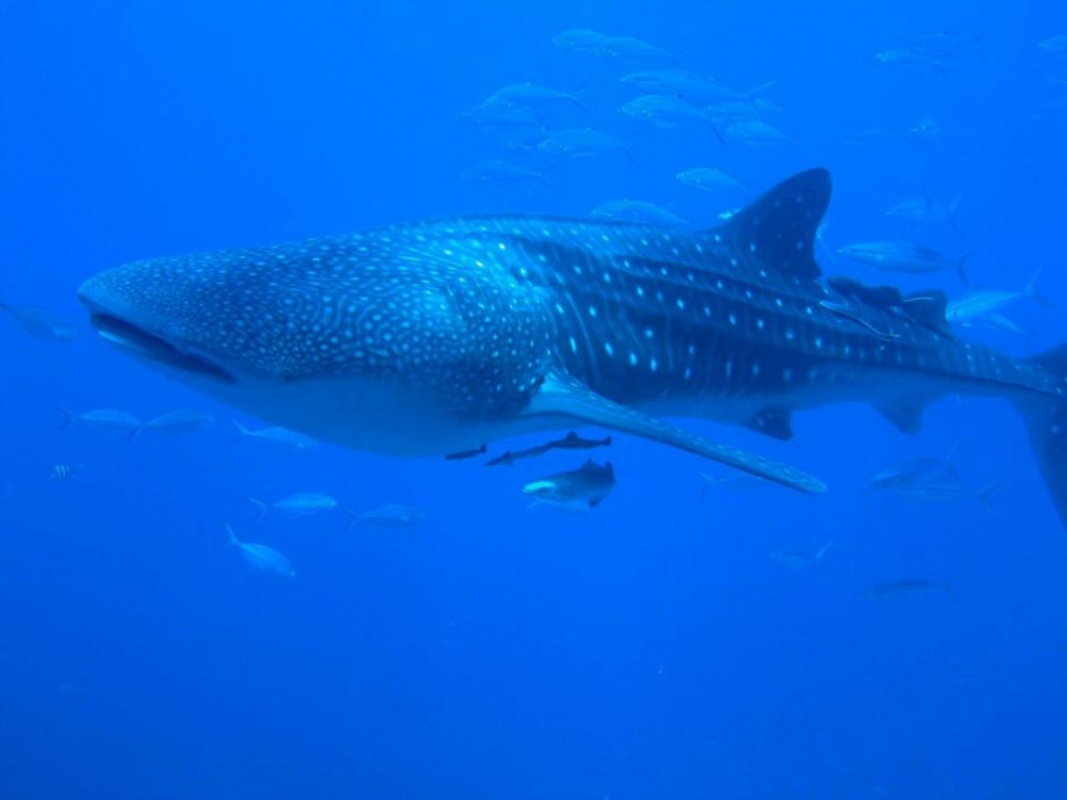

The biologists did not locate a pregnant whale shark. Ultrasound imagery showed egg follicles in two of the 22 females studied, meaning those females were mature enough to reproduce but were also not pregnant. The researchers developed a two-syringe system, where the first syringe creates a vacuum and allows the second syringe to draw only blood.īack in the lab, the blood plasma from six of the females showed hormone levels similar to levels obtained from a captive immature female in an aquarium, indicating those wild females were not pregnant.
#Whale sharks skin#
The fish “have some of the thickest skin of any animal - up to about 30 centimeters thick.”Īnother challenge is the seawater itself, which can contaminate blood samples. Performing these two tests on whale sharks is especially challenging, says study coauthor Simon Pierce, a whale shark ecologist with the Marine Megafauna Foundation, a nonprofit organization that uses research to drive marine conservation. Fisheries biologist Rui Matsumoto uses a propeller mounted on his scuba tank to keep pace with a female whale shark to take an ultrasound of her belly.

Until this study, the ultrasound wand had never been used outside of an aquarium on free-swimming wildlife. Then the researchers had to maneuver a 17-kilogram briefcase containing a waterproof ultrasound wand on the undersides of 22 females swimming near the Galápagos Islands and draw blood with syringes from their fins. Like superheroes in a comic book, the biologists used underwater jet packs - propellers attached to their scuba tanks - to swim alongside the fish, which average 12 meters in length and move about five kilometers per hour.
#Whale sharks how to#
To learn more about these gentle giants, Matsumoto and shark biologist Kiyomi Murakumo of Japan’s Okinawa Churaumi Aquarium had to figure out how to keep up with them. The organization researches subtropical animals and plants to maintain or improve natural resources in national parks. “Protecting organisms without knowing about their biology is like trying to catch a fly with our eyes closed,” says Rui Matsumoto, a fisheries biologist with the Okinawa Churashima Foundation in Japan. Nearly everything biologists think they know is based on the examination of one pregnant female caught by a commercial fishing boat in 1995. In part because whale sharks are relatively rare, their reproductive biology is mostly a mystery ( SN: 8/1/22). There are only an estimated 100,000 to 238,000 individuals left worldwide, which is more than a 50 percent decline in the last 75 years. Whale sharks ( Rhincodon typus) are classified as globally endangered by the International Union for Conservation of Nature. However, only time will tell what the future holds for orcas, sharks, and other animals here now that a new predator seems to have entered the scene.The ultrasound is part of a suite of new methods including underwater “jet packs” and blood tests that scientists hope could unlock secrets about this creature’s reproduction. “We're a little worried that will take up residence there and go after the sharks and mantas ,” said MarAlliance. This doesn't mean they don't prey upon them, but with the amount of boat activity and people on the water, there is a strong likelihood it would have been documented by now.” Up on the Ningaloo, there are many opportunities for the orca to predate upon whale sharks- and yet none have been observed doing so. There has only ever been one anecdotal report of an interaction, where the killer whale came from below and pushed the whale shark up – essentially trying to flip it,” she commented. Although in saying that, there are surplus humpback calves for the orca to prey upon, which might be a juicier option. Bec Wellard remembering an interaction between orcas and whale sharks in Australia! “In all the years we’ve been working with the killer whales on the Ningaloo, we’ve never seen a predation on the whale sharks. The recent interaction has sparked conversations worldwide, with marine scientist Dr. However, the organization does note that orcas were documented hunting and partially eating a whale shark in Baja California about twenty-two years ago, although that video was shot above water by a John O.


 0 kommentar(er)
0 kommentar(er)
